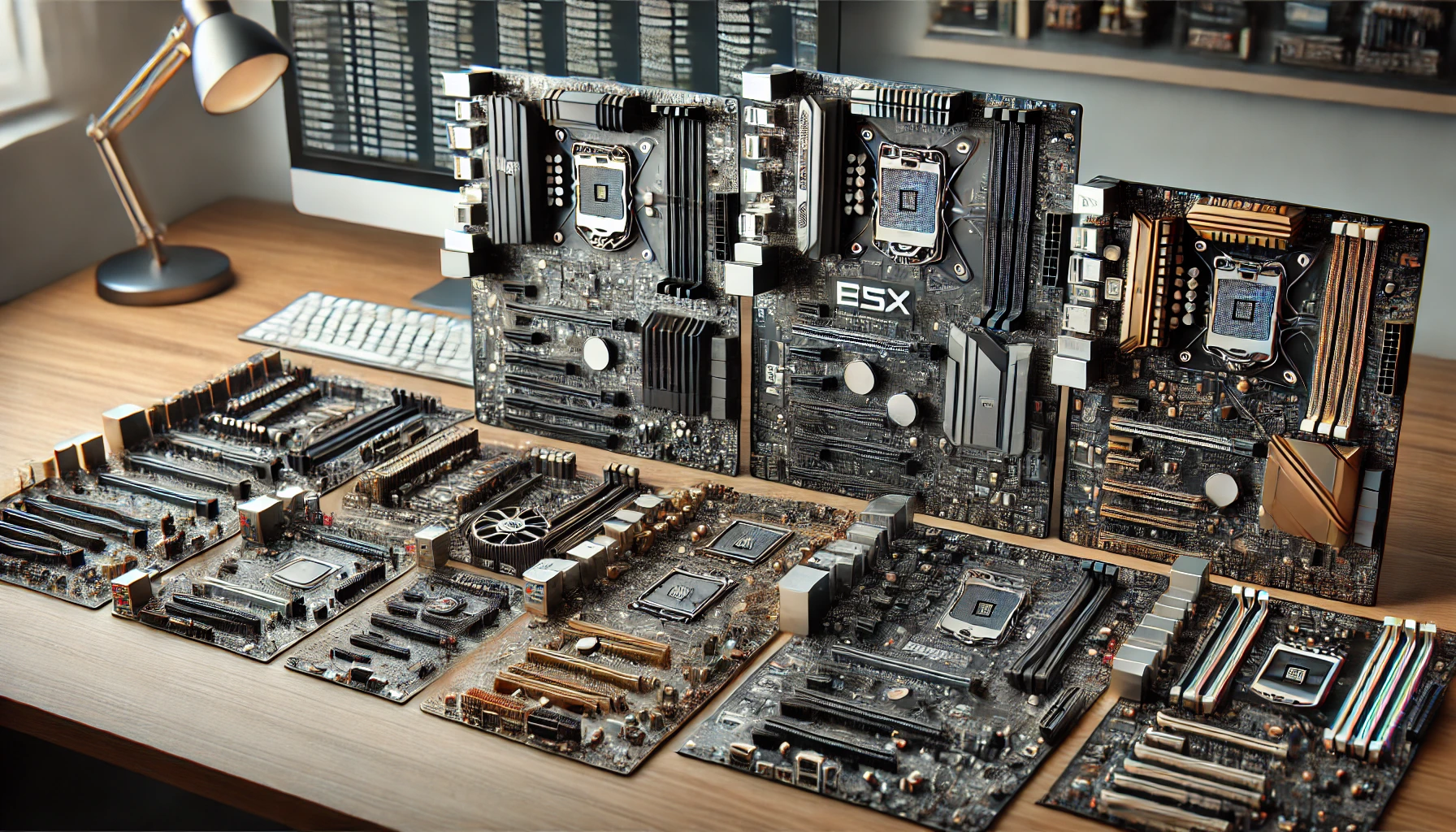When building a PC, the motherboard is one of the most important components you’ll need to choose. It’s the central hub that connects and powers all your hardware—from the CPU and RAM to your storage devices and graphics card.
Choosing the wrong motherboard can lead to compatibility issues, wasted money, and limited upgrade options. In this article, you’ll learn how to pick the perfect motherboard for your needs, whether you’re building a gaming PC, a workstation, or a budget-friendly everyday computer.
What Is a Motherboard?
A motherboard (also called a mainboard or mobo) is a large printed circuit board that houses and connects all the essential components of your computer. It determines which hardware and features your PC supports.
Everything from your CPU, RAM, storage devices, and graphics card plugs into the motherboard—so it must be chosen wisely.
Key Factors to Consider When Choosing a Motherboard
1. CPU Compatibility (Socket Type)
Your motherboard must be compatible with the CPU you plan to use. Every CPU connects to the motherboard through a specific socket type.
Common Socket Types in 2025:
- Intel: LGA1700 (12th, 13th, and 14th gen CPUs), LGA1851 (newer)
- AMD: AM5 (Ryzen 7000 and newer)
✅ Always check the motherboard’s supported CPU list before buying.
2. Chipset
The chipset controls how features and components interact with the CPU. It determines the capabilities of your motherboard, such as overclocking, USB ports, and PCIe lanes.
Example Intel Chipsets:
- Z790: Supports overclocking, more ports, and full features
- B760: Mid-range with limited overclocking support
- H610: Entry-level, limited features
Example AMD Chipsets:
- X670E: High-end, best for performance builds
- B650: Balanced for most users
- A620: Budget-friendly
3. Form Factor (Size)
Motherboards come in different sizes called form factors, which must match your case.
Main Types:
- ATX: Full-size, standard for most builds, lots of features
- Micro-ATX: Smaller, fewer ports, more affordable
- Mini-ITX: Compact, ideal for small builds, but with limited expansion
🧠 Make sure your PC case supports the motherboard size you choose.
4. RAM Support
Motherboards have a maximum RAM capacity, a number of RAM slots, and specific support for DDR4 or DDR5 memory.
- DDR4 is more affordable, but slower than DDR5
- DDR5 is faster and future-proof, but more expensive
Also check the maximum RAM speed supported (e.g., 5600MHz, 6400MHz), especially if you’re aiming for performance.
5. Expansion Slots (PCIe)
Expansion slots are where you connect your graphics card, sound card, or storage cards.
- PCIe x16 slot: Needed for a GPU
- Number of PCIe slots: Affects how many extra components you can add
- PCIe 5.0 vs 4.0: PCIe 5.0 is faster, but only necessary for cutting-edge GPUs and SSDs
6. Storage Options
Check how many and which types of storage devices you can connect.
- M.2 slots: For fast NVMe SSDs
- SATA ports: For SSDs and HDDs
- Some motherboards support RAID configurations for performance or backup
The more M.2 slots, the more future-proof your setup.
7. Rear I/O and Internal Connectors
Motherboards come with a variety of ports for your external devices.
Look for:
- USB-C / USB 3.2 / USB 2.0 ports
- Ethernet port (1G or 2.5G speeds)
- Audio jacks (basic or high-quality onboard audio)
- HDMI / DisplayPort (if you’re using integrated graphics)
- Wi-Fi & Bluetooth support (some have it built-in, others don’t)
8. VRM and Power Delivery
The VRM (Voltage Regulator Module) is critical for stable power delivery to your CPU.
- More and better VRMs = Better for high-end CPUs and overclocking
- Look for good heatsinks over the VRM area for cooling
If you’re using a powerful CPU, a weak VRM setup can cause throttling or instability.
9. BIOS Features and Ease of Use
Modern BIOS (or UEFI) interfaces are much more user-friendly. Look for:
- XMP support (to activate high-speed RAM)
- Fan curve control
- Secure Boot and TPM 2.0 (for Windows 11 compatibility)
- Easy BIOS flash/update tools
Some motherboards support BIOS Flashback, which lets you update BIOS without a CPU installed—handy for future upgrades.
10. Build Quality and Brand Reputation
Stick with reputable brands like ASUS, MSI, Gigabyte, ASRock, and NZXT. Pay attention to:
- Reviews and reliability
- Warranty terms
- Support for future updates
Cheaper motherboards often cut corners in durability and long-term performance.
Which Motherboard Should You Choose?
Here’s a quick guide based on different user needs:
| Use Case | Suggested Form Factor | Chipset Recommendation | Notes |
|---|---|---|---|
| Budget Build | Micro-ATX | AMD A620 / Intel H610 | Basic features, no overclocking |
| Gaming PC | ATX | AMD B650 / Intel B760 | Good balance of performance and cost |
| High-End Gaming | ATX | AMD X670 / Intel Z790 | Overclocking, top features |
| Compact Build | Mini-ITX | AMD B650 / Intel B760 | Small, stylish, fewer upgrade paths |
| Content Creation | ATX | AMD X670E / Intel Z790 | More M.2 slots, RAM capacity, USB ports |
Final Tips Before You Buy
- Use a compatibility tool like PCPartPicker to check every part against your motherboard.
- Think about your future needs—leave room for upgrades if possible.
- Double-check your case size and ensure airflow won’t be blocked by large components.
The Heart of Your PC Build
The motherboard may not be the flashiest part of your build, but it’s the foundation. Picking the right one ensures that all your expensive components can work together, perform well, and stay stable under pressure.
